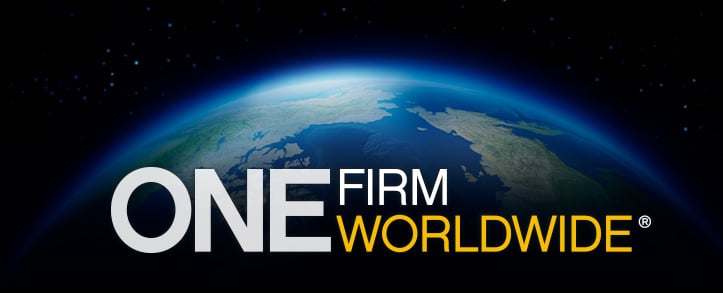
Copyrightability of AI Outputs: U.S. Copyright Office Analyzes Human Authorship Requirement
In Short
The Situation: Artificial intelligence ("AI") raises unique challenges in the context of copyright law. To address and clarify various issues arising at the intersection of AI and copyright, the U.S. Copyright Office ("Office") is in the process of releasing its Copyright and Artificial Intelligence Report ("Report"). Part One of the Report came out in July 2024 and concluded that AI has created an "urgent need" for a federal law addressing digital replicas or "deepfakes" of persons' appearances or voices. The Office released Part Two of the Report in January 2025 and is set to release Part Three later this year.
The Development: Part Two of the Report focuses on the copyrightability of AI outputs in view of the human authorship requirement. The Office provided additional guidance on how a work containing AI-generated material may satisfy that requirement as long as a human author has sufficient control over the expressive elements of the work.
Looking Ahead: AI presents unique challenges and opportunities in the copyright realm, and stakeholders should monitor further guidance by the Office, as well as litigation developments related to copyright and AI. The Office has advised that the third and final part of its Report will focus on issues that are already being heavily litigated: the training of AI models using copyrighted works, licensing considerations, and allocation of any potential liability.
Users of generative AI tools are often wowed by the content that these tools create in response to inputted prompts—but significant questions remain as to whether these outputs are copyrightable, and in particular, whether they satisfy the "human authorship" requirement of copyright law. In January 2025, the Office published Part Two of its Copyright and Artificial Intelligence Report, addressing the copyrightability of outputs generated by AI systems. The Office concludes that human contributions to AI-generated outputs are sufficient to constitute authorship but must be analyzed on a case-by-case basis.
In 2022, the Office's Review Board denied an applicant's attempt to register a work because it was generated entirely by an AI tool and therefore failed to meet the human author requirement. The following year, the Review Board again reiterated the human authorship requirement when it denied copyright protection for graphic novel images that were fully AI-generated. But the text of the book—written by a human—and its visual elements which were "selected coordinated, and arranged" by a human—were found to satisfy "human authorship" and constituted separate, copyrightable works.
Building upon these determinations, Part Two of the Report concludes that using AI to help create a work does not necessarily undermine copyrightability. The Office emphasized that "existing legal doctrines" suffice for analyzing a work's copyrightability when the author used AI as a tool to help create the work. These doctrines involve "fact-specific" analyses to determine if such works are copyrightable.
Importantly, the Office distinguishes between a scenario in which AI was used as a tool by a human author who has created an expressive work (which is copyrightable) and the situation where AI was used as a stand-in for human creativity to create an output without sufficient human participation (which is not). For instance, authors may use computers to help create outputs incorporated into copyrightable works. Similarly, authors may use AI to help create smaller parts of larger copyrightable works. In other words, using AI as a tool does not eviscerate the copyrightability of a work, provided that a human authored its expressive elements.
The Office was clear that it was not announcing a new framework specific to AI, but rather was relying on the well-established principle that "copyright law protects only [original] works of human creation." In other words, unlike in Part One when the Office recommended new federal legislation to address deepfakes, in Part Two the Office did not recommend new laws to address copyrightability and AI and specifically declined to suggest that AI-generated works could be protected through the establishment of new sui generis rights.
While litigation will provide additional insights for assessing when an AI-assisted work is copyrightable, the Office's guidelines are instructive on this fundamental issue:
- Fully AI-generated outputs generated in response to a human input or prompt lack human authorship and are therefore not copyrightable. See Report Part Two at 18;
- Selecting from several AI-generated outputs is likewise insufficient to establish copyrightability because selection of a single output is not itself a creative act. See Report Part Two at 21;
- Works that have been created by a human but then modified by AI (e.g., a hand-drawn illustration that has been enhanced or modified by AI) are copyrightable, but the copyright covers the "perceptible human expression" in the resulting work. This "may also cover the selection, coordination, and arrangement of the human-authored and AI-generated material, even though it would not extend to the AI-generated elements standing alone." See Report Part Two at 22–24;
- Works involving material modifications of AI-generated outputs by a human are copyrightable if the human's modifications "select or arrange AI-generated material in a sufficiently creative way" or otherwise "meet the standard for copyright protection." See Report Part Two at 24.
The Office will release a final Part of its report on AI and copyright. Forthcoming topics will address training of AI models on copyrighted works, licensing considerations, and allocation of any liability.
Three Key Takeaways
- Human authorship is still essential: Human authorship is a longstanding principle of copyright law, and copyright protection in the age of AI remains tied to human creativity. While human authors may be aided by AI tools in creating expressive works, only works with sufficiently creative human input qualify for copyright protection.
- Inputting a prompt does not constitute authorship of the output: A party who simply enters a prompt into a generative AI tool cannot claim authorship over the resulting output. The variation of outputs in response to identical human inputs further indicates a lack of human control in the expressive elements of the output.
- Case-by-case determinations: Whether human contributions to particular AI-assisted works are sufficient to constitute authorship will be determined on a case-by-case basis.








